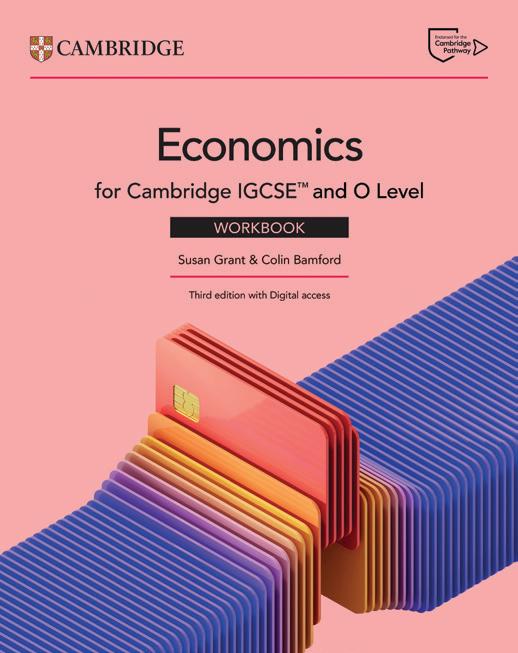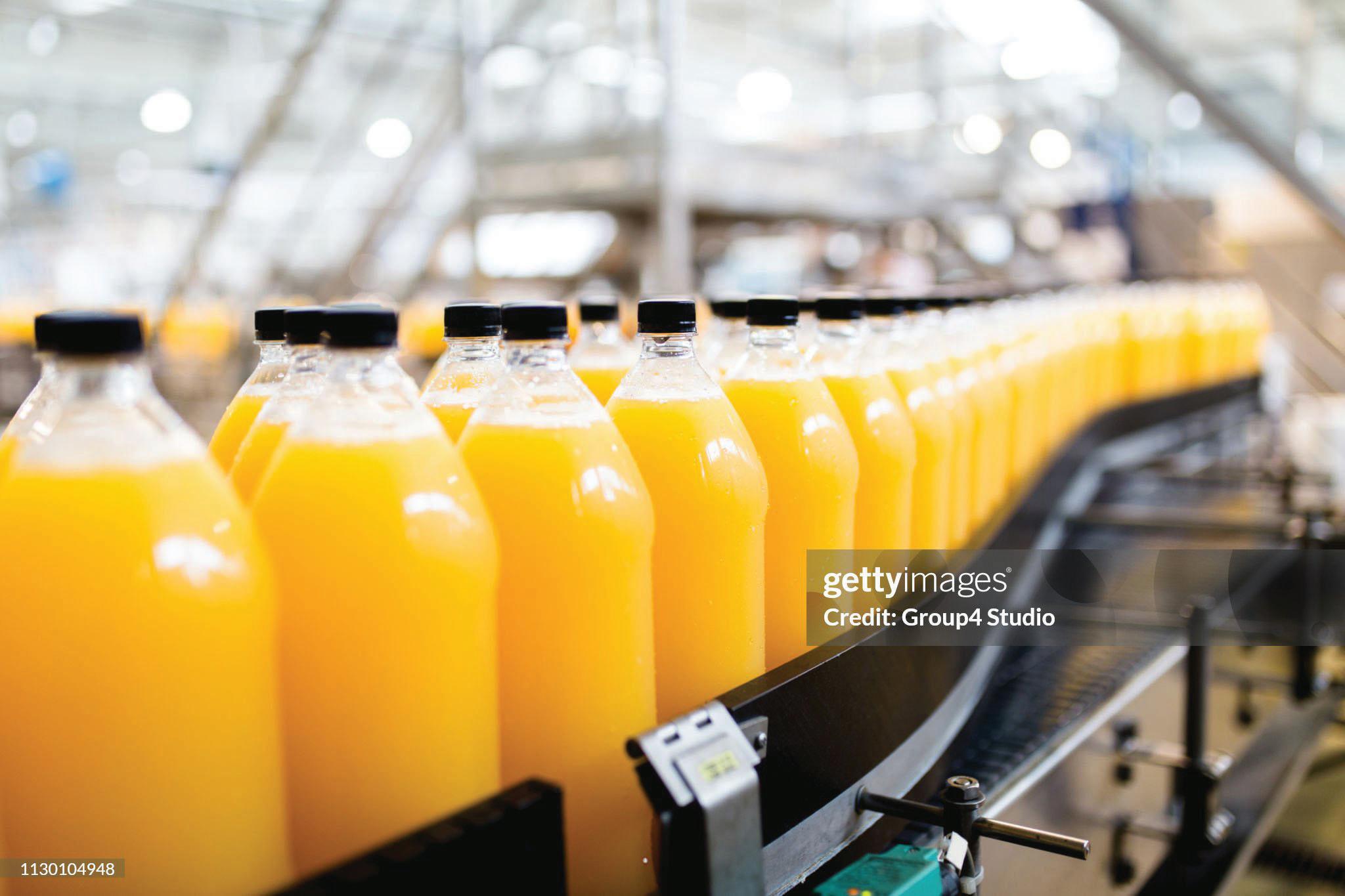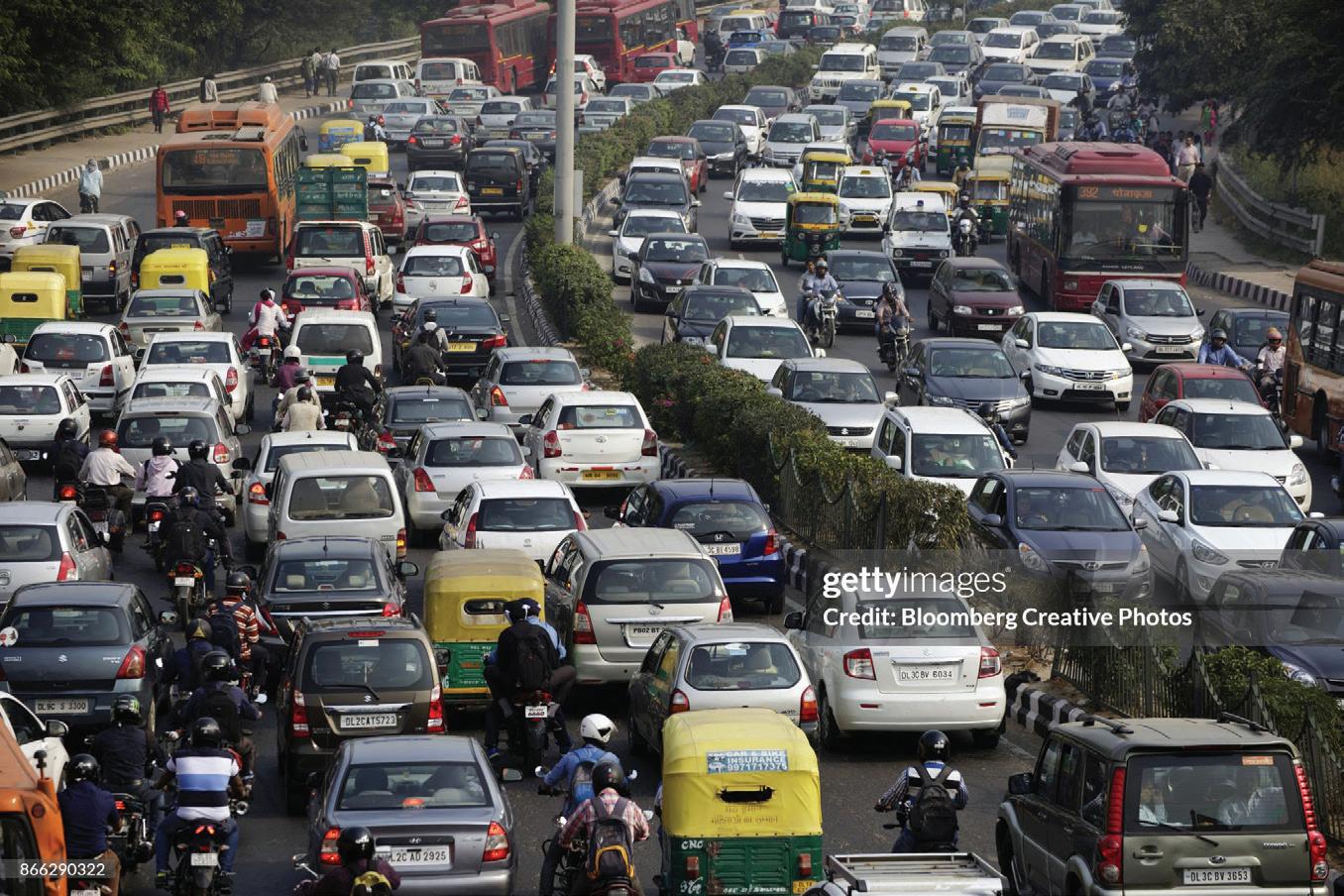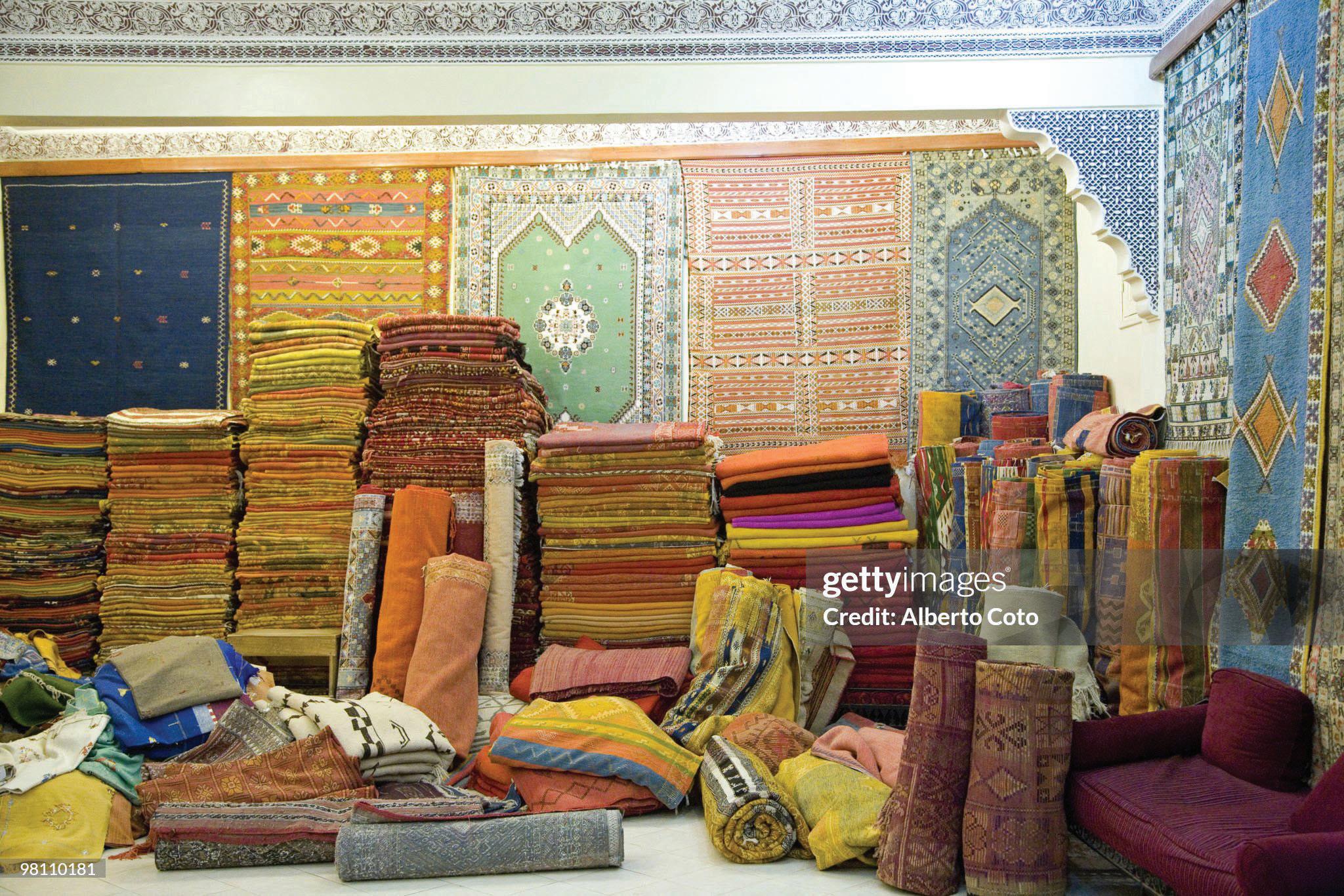We are working towards endorsement of this title for the Cambridge Pathway.


We are working towards endorsement of this title for the Cambridge Pathway.

This suite of resources supports students and teachers following the Cambridge IGCSE™, IGCSE (9–1) and O Level Economics syllabuses (0455/0987/2281). All of the components in the series are designed to work together and help students develop the necessary knowledge and skills for this subject.

The Coursebook is designed for students to use in class with guidance from the teacher. It offers complete coverage of the Cambridge IGCSE™ and O Level Economics syllabus (0455/0987/2281). The Coursebook contains in-depth explanations of economics concepts, a variety of independent and group activities, engaging new features and images to help students make real-world connections.
A digital version of the Coursebook is included with the print version, and available separately. It includes access to video content to further support students’ learning, as well as simple tools for students to use in class or for self-study.
The Workbook provides further practice of all the skills presented in the Coursebook and is ideal for use in class or as homework. It provides engaging activities, worked examples and opportunities for students to evaluate sample answers so they can put into practice what they have learnt.
A digital version of the Workbook is included with the print version. It includes simple tools for students to use in class or for self-study, as well as downloadable templates to complete some of the activities.


The Digital Teacher’s Resource provides everything teachers need to deliver the course. It is packed full of useful teaching notes and lesson ideas, with suggestions for differentiation to support and challenge students, ideas for formative assessment, overcoming common misconceptions and language support.
The Digital Teacher’s Resource contains downloadable resource sheets and worksheets. All answers are available on Cambridge GO.
We are working towards endorsement of this title for the Cambridge Pathway.
Throughout this Coursebook, you will notice some features that are designed to help your learning. Here is a brief overview of what you will find.
Learning intentions open each chapter. These help you with navigation through the Coursebook and indicate the important topics in each chapter.
Economics in Context introduces you to the content in a chapter. These place some of the key ideas contained in the chapter into a real-world business setting. Each one contains questions that allow you to discuss the topic.
Key vocabulary is highlighted in the text when it is first introduced. An accompanying definition tells you the meanings of these words and phrases. You will also find definitions of these words in the Glossary at the back of this book.
Tips are provided throughout this Coursebook to help with your learning. The tips might cover how to avoid common errors or misconceptions, advice on answering questions or key skills for your course.
These explain the links between topics in different sections of the Coursebook.
Discussion questions are used throughout this Coursebook to prompt thinking at key points within each chapter.
There are various activities throughout this Coursebook. These give you opportunities to discuss topics or produce your own work either individually, in pairs or in groups.
Economics in Action provides you with an opportunity to apply economics principles to current events in various international settings. You will look at your life through an economics lens, and also apply your analysis skills and use evidence to look at the world of work. Designed to encourage group discussion, the short case studies and accompanying questions will help you to make connections between employment and studying economics.
Reflection questions direct you to look back on an activity and encourage you to think about your learning. You will reflect on and assess the process that you used to arrive at your answers.
At the end of each chapter, you will find a list that brings together the key information you have learnt. This list can also be used as a useful revision aid.
We are working towards endorsement of this title for the Cambridge Pathway.
Each chapter ends with a grid showing the Learning intentions from the start of the chapter. When you are revising, you might find it helpful to rate how confident you are for each of these statements. You should also provide an example to support your score.
Each chapter contains a set of multiple-choice questions, as well as a set of four-part questions. You can use these to assess the knowledge you have gained on this section of the syllabus.
Each section ends with a set of more demanding questions that includes an extended case study. These can be used to assess what you have learnt across several chapters of the Coursebook. These are available as a digital-only download.
We are working towards endorsement of this title for the Cambridge Pathway.
Cambridge IGCSE™ & O Level Economics introduces you to a subject that will provide you with the skills and information to explore some of the key issues and challenges facing the world today.
The Coursebook will help you develop your skills in interpreting economic information, explaining economic ideas, applying those ideas to current issues and drawing clear, accurate and well-labelled economic diagrams.
The Coursebook is divided into six sections and has 36 chapters. Each chapter has features to help you increase your understanding and enjoyment of the subject. The features include ‘Economics in context’, activities, key terms, tips, key links and ‘Economics in action’.
The activities give you the opportunity to use and strengthen your understanding of economic topics. Key terms define what economic words mean. You will find that some words in economics, such as demand, have a rather different meaning in economics than in everyday language. You will also come across new words, such as fiscal policy.
Tips may remind you of a key point, warn you about a common confusion or recommend something you could do to increase your understanding. Links are given to parts of other chapters where concepts can help you understand topics. ‘Economics in context’ aims to get you started thinking and discussing a topic. ‘Economics in action’ puts you in the role of an economist.
At the end of each chapter, there is a summary of the main points of the chapter. There are also multiple-choice questions and four-part questions where you can assess your understanding. At the end of each section, you will find further practice questions based on source material and stimulus material.
Economics is an exciting subject. Economists play a key role in the world. They give advice to firms and governments to improve their performance and also comment on their success or failure. The work of economists can make a significant difference to people’s lives. For instance, the policies they recommend to governments may increase employment, reduce poverty and improve the quality of the environment.
Susan Grant
We
By the end of this chapter, you will be able to:
• define and give examples of the basic economic problem
• explain the concept of scarcity
• give examples of the basic economic problem in the context of consumers, workers, producers/firms, governments
• explain the key resource allocation decisions answering the three basic economic questions of what to produce, how to produce and for who to produce
• explain the difference between economic goods and free goods. We


Do you have everything you need to live? What about everything you would like to have? Some people do not have basic goods and services needed to live as they do not have enough food, clothing or adequate housing. Once our needs for sufficient food, clothing and housing are met, we will still want other products. Indeed, our wants are unlimited. The richer we get, the more, and the better, quality products we would like. Many of us would like, for instance, more holidays and the latest smartphone. This chapter will look at why we cannot have everything we would like.
Stuck in traffic
In October 2023, people sat in their cars for three hours, stuck in a traffic jam in Panathur in India. As a result, workers were late for work, students missed lessons and friends did not meet up. In many towns and cities throughout the world, drivers and their passengers waste time and often become stressed when stuck in long queues of slow moving or stationary traffic (see Figure 1.1).
Traffic jams occur because the number of cars and other vehicles grows faster than road space. Every year more people own a car and some people own more than one car. The average number of cars per household in India is rising every year.
Discuss in a pair or group:
1 Does everyone who wants a car own a car?
2 Is there enough spare land available where you live to build more roads?
KEY TERM
wants: desires for goods and services.

Figure 1.1: Increasing car ownership can cause problems
There is no limit to people’s wants. Wants are infinite (unlimited) while the resources that are required to make the things people want are finite (limited). For instance, people want more and better clothing, more and better healthcare and improved transport infrastructure. In contrast, resources, that is the number of workers, machines, offices, factories, raw materials and land used to produce goods and services, are scarce. For example, at any given time there are only a limited number of workers and they can produce only a specified amount (see Figure 1.2).
The mismatch between what people want and the maximum that can be produced gives rise to the basic economic problem. The basic economic problem of not being able to satisfy everyone’s wants arises because of the scarcity of resources. Choices have to be made about how resources are to be used.
KEY TERMS
resources: inputs used to produce goods and services. the basic economic problem: where unlimited wants are greater than finite resources.
scarcity: a situation where there are not enough resources to satisfy everyone’s wants.

Figure 1.2: There is limit to what workers can produce
Scarcity continues to exist. More goods and services are being produced today than ever before, but the growth in wants is exceeding the growth of economic resources. People still want more products than the resources available can produce. Over time, wants continue to grow and change.
The fact that people have to choose which products to buy, which subjects to study, what jobs to do and which products to produce shows that there are insufficient (not enough) resources. As consumers, we cannot have everything we want. We have limited incomes. Students have to select which courses to study. It is not always possible to study economics and chemistry at the same time. Workers have to make choices about what jobs they do. Some teachers may carry out other work in the evening, but when they are teaching they are not working as writers! Time is in limited supply. Producers have to decide what to make. Farmers cannot grow rice and wheat on the same land. They have to select one crop as land is scarce. The government has to decide how to spend tax revenue. Deciding to build a new hospital may mean that it is not possible to build a new school.
It is very important to learn definitions of economic terms. The more you apply a term, such as scarcity, in your work, the sooner you will get used to using it. You may also want to compile your own economics dictionary by writing down terms in alphabetical order as you come across them.
In your group, discuss and decide which of the following are scarce:
a vacancies for university degree courses
b food
c healthcare.
Note down the group’s decision in each case and why you reached your decision.
The Maldives is a country with more than a thousand islands. It is now one of the world’s most popular places to go for a holiday. The country opened its first holiday resort in 1972 and attracted a thousand tourists (see Figure 1.3). By 2023, 1.8 million tourists came to the country. Many Maldivian workers are employed directly in tourism or indirectly in jobs involved in supplying goods and services used in tourism. Some of the most popular islands now have no space left for hotels, restaurants and souvenir shops. Tourists also increase the amount of waste in the country, including plastic waste. Most of this waste is burnt which causes air pollution and some leaks into the sea which pollutes the water around the Maldives.
1 What may limit the number of holidays abroad a person can take?
2 What may limit the number of foreign tourists the Maldives can host?
All economies have to answer three fundamental economic questions:
• What to produce?
• How to produce it?
• Who is to receive the products produced?

The economic questions arise because of the basic economic problem of infinite wants exceeding finite resources. A decision has to be made as to how the economy’s resources are to be allocated. For example, how many resources should be allocated to healthcare, how many to leisure goods and services and how many to education.
We are working towards endorsement of this title for the Cambridge Pathway.
Once the decision is made, an economy has to decide on how the products are to be produced, for example whether a large number of workers should be used in agriculture or more machines used. Finally, because it is not possible to produce enough goods and services to satisfy the wants of everyone, it is necessary to decide how the products should be distributed. Should products be distributed to people according to their needs or their ability to earn a high income?
Decide whether each of the questions in Table 1.1 relates to what to produce, how to produce or who to produce for. Copy and complete the table.
Table 1.1
Question
a Should a car manufacturer focus on producing electric cars?
b Should a government provide free healthcare to all of its citizens?
c Should everyone have the same income?
d Should farmers make use of drones?
e Should farmers use more of their land to grow maize and less to grow millet?
f Should workers be used to produce luxury goods or necessities (essential goods)?
Key resource allocation decision
Compare your answers with another student. If you disagreed on any of the questions, were you able to explain your answer? If some of your answers were not correct, what strategy did you use to increase your understanding?
Most goods and services are economic goods. Resources are used to produce economic goods and so they are limited in supply. For example, a carpet is an economic good (see Figure 1.4). The material and labour used to produce it could have been used to make another good (or goods). It is easy to find examples of economic goods. Almost every good and service you can think of is an economic good. Your education is an economic good, since your teachers and the other resources used to provide it could have been employed to make other products.
economic good: a product which requires resources to produce it.

Free goods are much rarer. When most people talk about free goods, they mean products they do not have to pay for. These are not usually free goods in the economic sense since resources have been used to produce them. Economists define a free good as one that takes no resources to make it. It is hard to think of examples of free goods. Sunshine is one such example, and so is water in a river (see Figure 1.5). However, as soon as this water is processed for drinking, or used for irrigation of fields, it becomes an economic good.
free good: a product which does not require any resources to make it.

LINK There is another difference between an economic good and a free good. This is covered in Chapter 3, topic 3.2 Influence of opportunity cost on decision-making (Economic goods and free goods).
In economics, what determines whether a product is a free good is not whether people have to pay for it, but whether it takes resources to produce it.
We are working towards endorsement of this title for the Cambridge Pathway.
In a group of five, each person choose one of the options below. Each person has 60 seconds to explain to the rest of the group whether their option is an economic good or a free good and why.
a air
b bicycle tyres
c newspapers
d public libraries
e state education.
SUMMARY
You should now know:
• People’s wants continue to grow.
• Resources such as workers, machines and land are limited in supply.
• The economic problem is that infinite wants exceed finite resources.
• The three key resource allocation decisions are what to produce, how to produce it and who to produce for.
• Economic goods take resources to produce them.
• Free goods exist without the use of resources.
1 Why does scarcity exist?
A Each year workers tend to produce less than previously
B Machines wear out with time
C There are not sufficient resources to produce all the products people want
D There is a limit to people’s wants [1]
2 Why will scarcity continue to be a problem in the future?
A Prices will rise
B The quantity of resources will decline
C Wants will continue to increase
D World population will fall [1]
3 Which combination would increase the basic economic problem?
Resources
A Decrease by 5%
B Increase by 10%
C Increase by 20%
D Remain unchanged
4 Which of the following is a free good?
Wants
Decrease by 20%
Increase by 4%
Remain unchanged
Decrease by 5%
A Vaccination provided without charge by the state
B Products given away by a supermarket to attract customers
C Recycled paper
[1]
D Wind coming in from the sea. [1]
Total: [4]
5 a What is meant by the basic economic problem? [2]
b Explain why a car is an economic good. [4]
Total: [6]
How well do you think you have achieved the learning intentions for this chapter? Give yourself a score from 1 (still need a lot of practice) to 5 (feeling very confident) for each learning intention. Provide an example to support your score.
define the basic economic problem
explain the concept of scarcity give examples of the basic economic problem
explain the key resource allocation decisions
explain the difference between economic goods and free goods